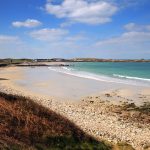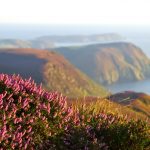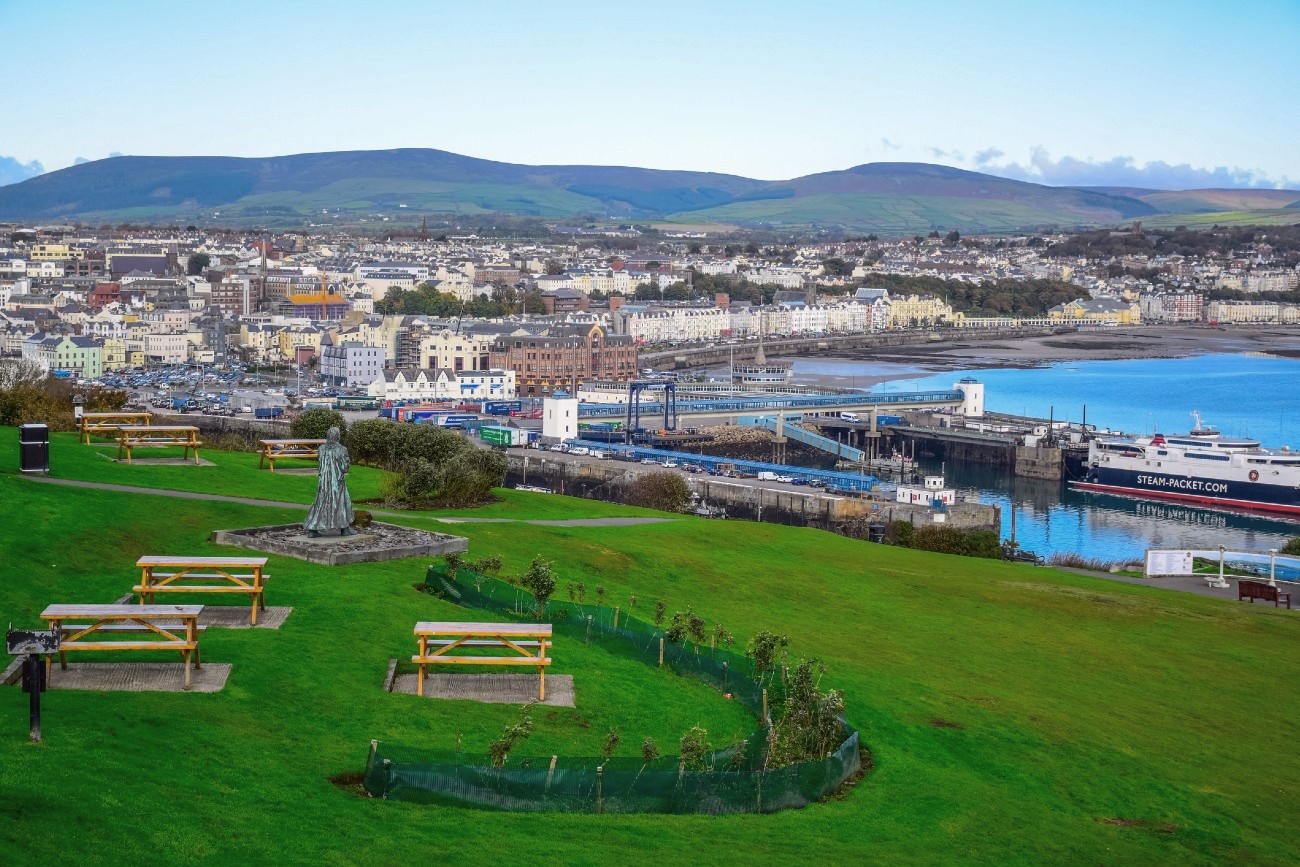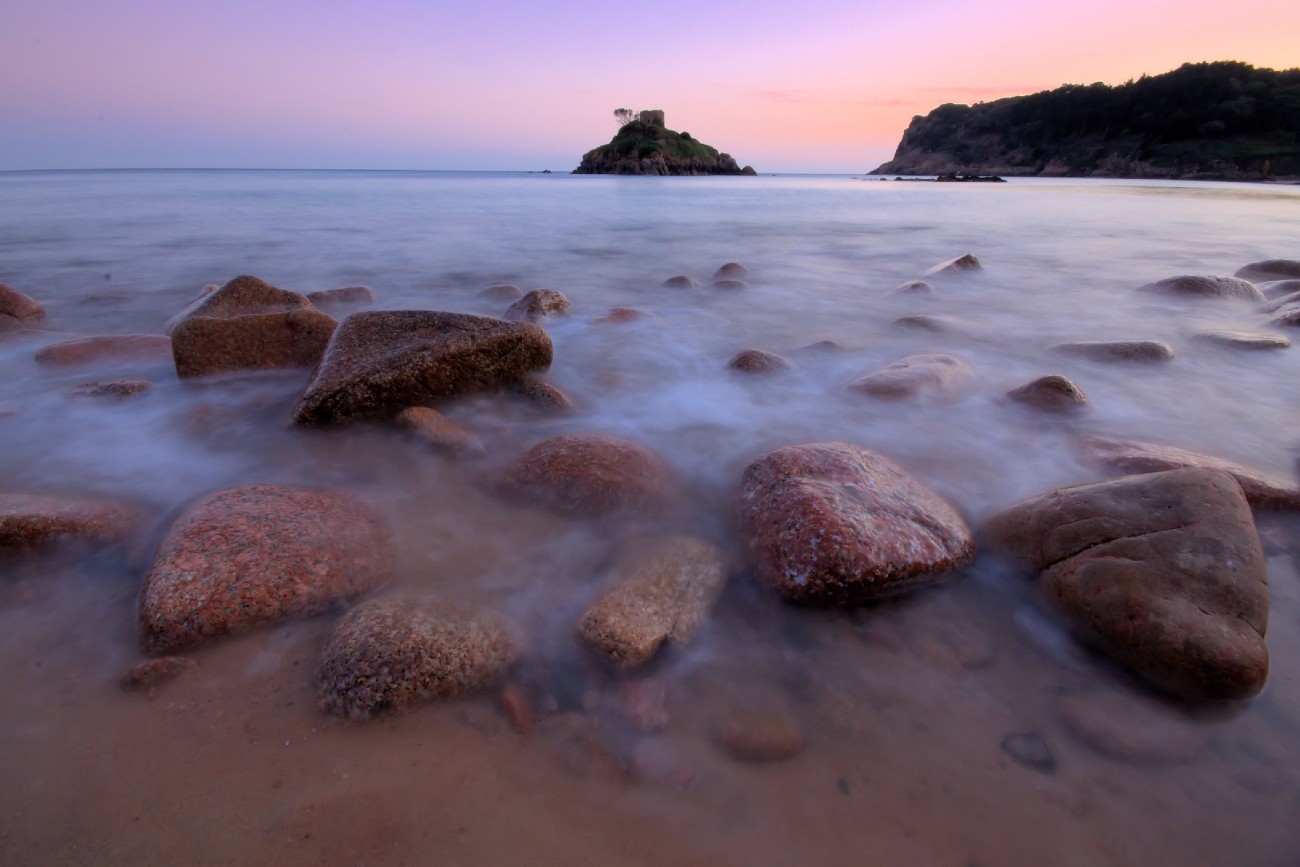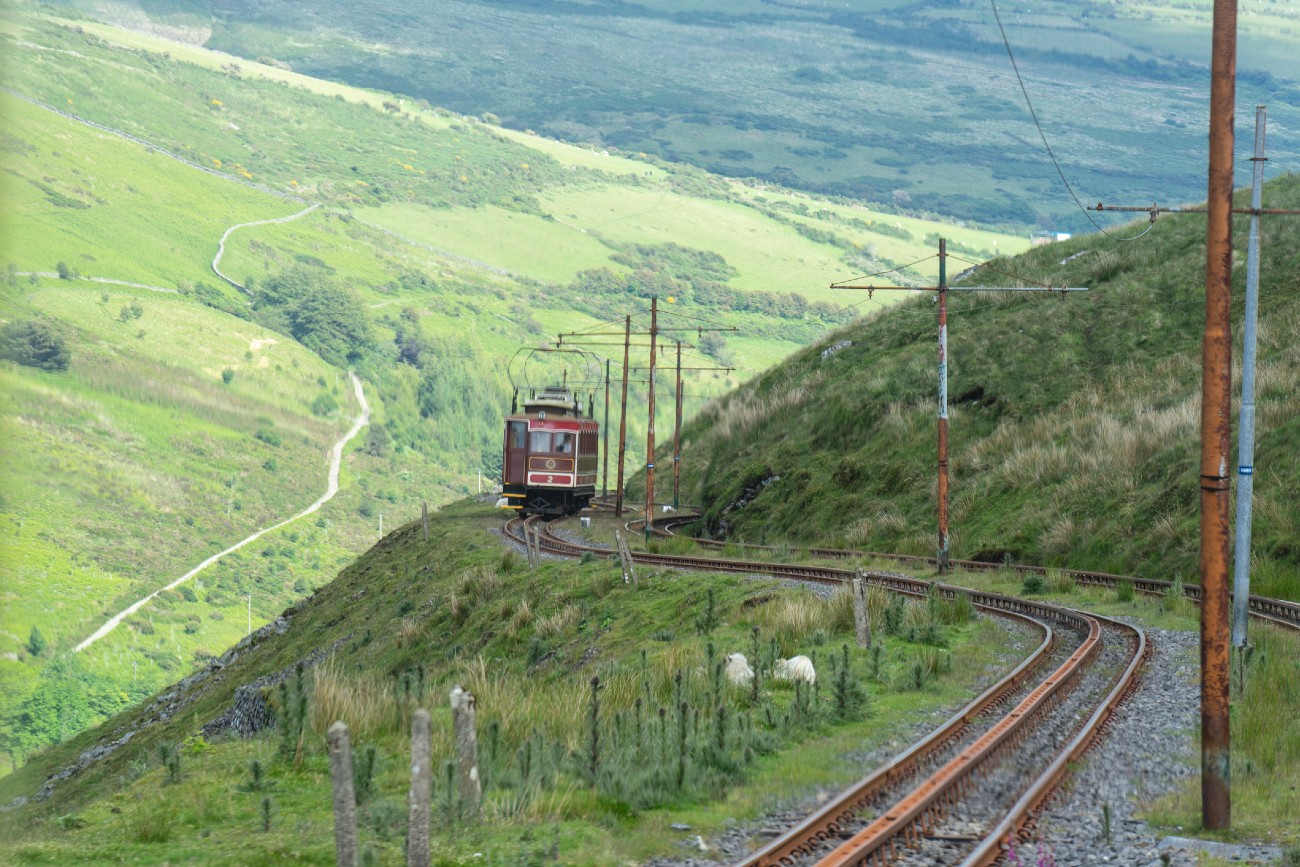
Towards the centre of the Isle of Man, the rolling green lowlands rise upwards to form the largest hills on the island. The upland regions are places of remote beauty, fresh mountain air and unique habitats – all of which make them ideal for exploring. Standing at 2036 feet (621 metres) above sea level, the largest mountain on the Isle of Man is Snaefell. The origin of this name comes from the Norse language and translates as ‘Snow Mountain’, in reference to the peak often being the first place on the island to receive winter snowfall.
As Snaefell is the highest point of land for miles around, it is often shrouded in mist. Despite this, the views from the summit on a clear day are some of the best on the island. It is said that when the weather is favourable, visitors to the top of the mountain are rewarded with views of six kingdoms – the Isle of Man, England, Ireland, Wales, Scotland and Heaven. While the latter may be a more fanciful idea, the other kingdoms can certainly be spotted and this makes Snaefell one of the few places in the British Isles with such a wide-ranging view.
This alone is reason enough to visit the summit, but the peaceful mountain landscape is also a great place where I usually enjoy the wilds of the Isle of Man in all their glory. The walk to Snaefell’s summit is therefore a popular one among hikers, but it’s easily accessible for those of limited ability also, largely thanks to the mountain railway.
Completed in 1895, this product of the Victorian era is the only electric railway in the British Isles. It operates during the summer months, winding its way to the top of Snaefell and taking in the incredible scenery along the way. I have made it only few times to the top of the mountain but I can confirm that the views you will get will be one of the bests you have ever seen.
Purple Hills
Although the upland landscapes of the Isle of Man may look wild and untamed, its modern-day appearance is the result of thousands of years of human activity. Since Neolithic times, the island’s mountains have played an important role in livestock rearing, food production and as a source of timber.
The clearing of natural forests occurred throughout many parts of the British Isles, but it’s particularly apparent around Snaefell. Few trees grow in the areas surrounding the mountain, with the landscape being dominated by heather and peatland. These habitats often appear barren at first glance, however they are important ecosystems and provide a range of benefits, both to humans and to wildlife.
The peatland environments lock up carbon dioxide from the atmosphere, reducing the impacts of climate change. They also act as natural water filtration systems, providing the Isle of Man with some of the purest natural water in the world. On top of this, the landscapes they create go hand-in-hand with Manx cultural identity, with the colours of the heather and gorse being woven into the fabric of Manx tartan.
These colours are most obvious around Snaefell during the summer months, with the yellow flowers of the gorse adorning the lower slopes and the purple heather hues taking centre stage higher up.
Among the colourful vegetation, a range of wildlife can be found, with bird species being especially common. Some of the most iconic sights in the Manx uplands are the Red Grouse, the Curlew and the Hen Harrier.
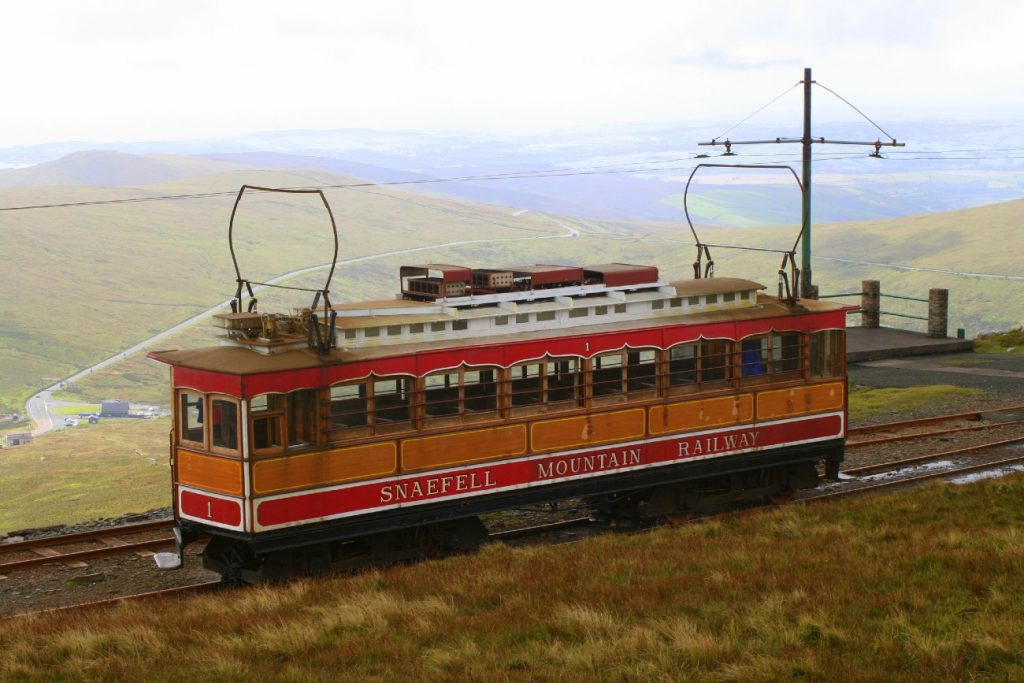
Snaefell Mountain Railway
Dressed For Winter
While it’s a good idea to be on the lookout for the upland birds that live on the slopes of Snaefell, there is another fascinating creature to be found in the area. Originally introduced to the Isle of Man for recreational shooting purposes, the Mountain Hare is native to other parts of the British Isles, unlike the closely related Brown Hare – a species brought here by the Romans.
Mountain Hares are true montane specialists, only being found in upland habitats and polar regions. These environments can be challenging to survive in, but Mountain Hares are one of the hardiest species in the British Isles, possessing a range of unique adaptations.
The species is perhaps best known for its ability to completely change colour, to remain camouflaged during the changing seasons. As summer turns to winter, snowfall at higher altitudes turns the Manx hills from brown to white. The Mountain Hare mimics this colour change to remain hidden from predators, developing a beautiful, white winter coat.
Another trait they possess to protect against the elements is paws that are heavily padded with fur. Not only does this help to insulate these tough rodents against the cold, it also gives them the animal-equivalent of snowshoes, meaning they can grip well on icy surfaces and avoid sinking into the snow. Although the species is rare on the Isle of Man, the high altitudes of Snaefell are some of the best places to catch a glimpse.
For a taste of mountain air, Snaefell is undoubtedly the best destination on the Isle of Man to visit. The incredible views from the summit are a real highlight but there are also some great opportunities for wildlife watching.
Do you like adventures? Then read the following article: Adventures In The Isle Of Man

